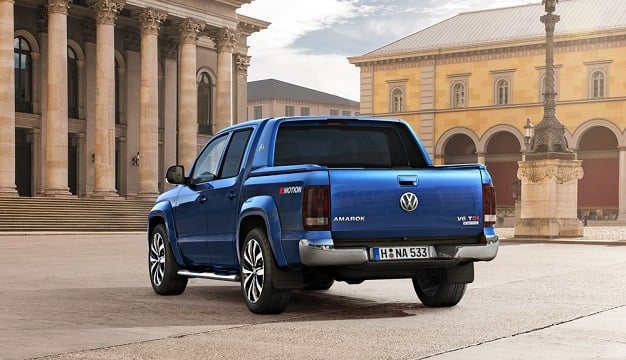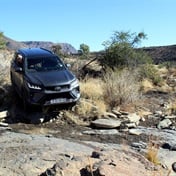
• South Africa's most powerful bakkie will launch in November 2020.
• The 190kW version of the Volkswagen Amarok is priced from R908 300.
• Audi is the foundation on which Amarok's ultimate powertrain success was built.
• For more motoring stories, go to www.Wheels24.co.za
The 190kW version is a symbolic milestone for Amarok, by far the most successful German bakkie of all time. Where Mercedes-Benz desperately failed to make a case for its V6-powered X-Class double-cab, VW has only encountered success since launching the six-cylinder Amarok in 2017.
The demand for these V6 turbodiesel bakkies remains high. In the competitive double-cab markets of South Africa and Australia, V6 engines now account for close to 80% of all Amaroks sold. With VWSA now having updated the local range with its latest high-output 190kW V6, that trend is sure to continue.
There is no argument that many rival bakkie enthusiasts who openly mocked the 2.0-litre Amarok when it originally came to market in 2011, will admit to VW having prevailed as the most potent double-cab.
Amarok's journey from 2.0-litres and four-cylinders to 3.0-litres and six-cylinders is an interesting one, made possible by a most unlikely source: Audi.
The German luxury brand is best known for its elegantly styled sportscars, hot hatchbacks, limousines, and high-performance station wagons appears an unlikely source for bakkie greatness. When one goes back into the Amarok's history, Audi is very much the foundation on which this bakkie's ultimate powertrain success was built.
Image: Motorpress
Sourcing a suitable six-cylinder diesel engine
Back in the early 2000s, engineers and product planners at Audi realised that luxury sedan customers wanted high-speed autobahn cruising performance and better fuel economy.
The requirement was for an engine capable of delivering excellent overtaking performance and great cruising speed fuel consumption, by leveraging the inherent energy density of diesel fuel. Balancing capacity with cylinder count was crucial, and a 3.0-litre V6 configuration was identified as ideal.
Audi's powertrain engineers delivered their CR-series 3.0-litre V6 turbodiesel engine to market in 2004. It first powered the second-generation A8, producing 184kW and 550Nm, without sacrificing the limousine's low cabin noise and vibration levels.
The original cylinder block design used vermicular graphite cast iron with six UV laser-cut bores, ensuring incredible manufacturing precision and adequate structural strength, to deal with the high compression ratio and cylinder forces of a turbodiesel.
Audi's engineers would never allow their A8 customers an unrefined driving experience, and the 3.0-litre V6 turbodiesel had a contra-rotating balance shaft to ensure impeccably smooth operation. This engine would be continuously evolved by Audi, powering a diversity of vehicles as the German brand started profiting from greater SUV demand.
Image: Newspress
VW won the long game – with help from Audi
When the Amarok originally launched in 2010, VW was unapologetic that its 2-litre turbodiesel engine was entirely sufficient. Knowledgeable bakkie people disagreed and suggested that VW should use a less fuel-quality sensitive version of the Touareg's 3.0 V6 TDI, which in turn was a development of the original Audi design.
Market demand eventually won the day, and VW did the inevitable, by introducing the V6 turbodiesel engine to Amarok. The first concept vehicle to demonstrate this intent was its 2014 "Power Pick-Up" single-cab bakkie.
As South African Touareg V6 TDI drivers journeyed through the Namibian and Kalahari deserts, they proved that the 3-litre V6 turbodiesel was rugged enough to survive extreme conditions, paving the way for its introduction to Amarok.
There is no question that VW's Touareg validated the Audi 3.0-litre V6 turbodiesel for bakkie use. Any concerns that might have lingered about the engine's suitability to run at high temperatures, under peak load, with very little speed-induced airflow for cooling, were dispelled by Touareg owners.
Audi's engineers are due the credit they deserve for Amarok V6's success. Their original 3.0-litre V6 turbodiesel diesel was a fundamentally excellent design, allowing VW to finally evolve this engine architecture into a 190kW double-cab bakkie application which is both robust and refined.




 Publications
Publications
 Partners
Partners













